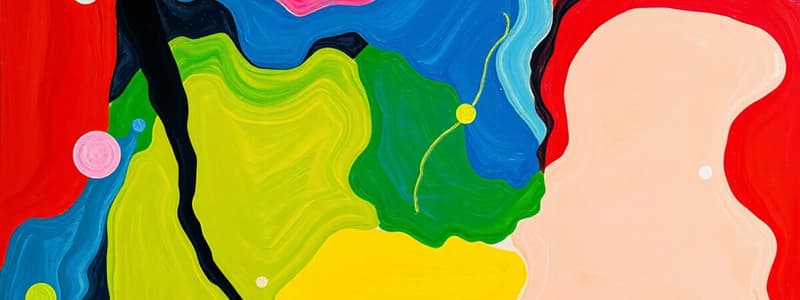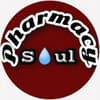Podcast
Questions and Answers
What primarily stimulates acid secretion in the stomach during the gastric phase?
What primarily stimulates acid secretion in the stomach during the gastric phase?
- Histamine release prompted by gastrin (correct)
- Inhibition from intestinal hormones
- Neural regulation from the vagus nerve
- Direct release of acid by gastric cells
Which phase has a direct inhibitory effect on gastric acid and enzyme secretion?
Which phase has a direct inhibitory effect on gastric acid and enzyme secretion?
- Cephalic phase
- Absorptive phase
- Gastric phase
- Intestinal phase (correct)
What method can effectively stop acid secretion in the stomach?
What method can effectively stop acid secretion in the stomach?
- Using proton pump inhibitors (correct)
- Enhancing histamine release
- Activating pancreatic enzymes
- Increasing gastric dilatation
Which hormone is primarily responsible for stimulating the gall bladder to contract?
Which hormone is primarily responsible for stimulating the gall bladder to contract?
What effect does intestinal acid have on gastric motility?
What effect does intestinal acid have on gastric motility?
Which of the following actions is NOT a function of secretin?
Which of the following actions is NOT a function of secretin?
What primary function is associated with Growth Hormone (GH)?
What primary function is associated with Growth Hormone (GH)?
Which hormone is primarily responsible for increasing sodium retention during low blood pressure conditions?
Which hormone is primarily responsible for increasing sodium retention during low blood pressure conditions?
What triggers the release of Adrenocorticotropic hormone (ACTH)?
What triggers the release of Adrenocorticotropic hormone (ACTH)?
Which function is NOT associated with the role of cortisol in the body?
Which function is NOT associated with the role of cortisol in the body?
Which hormone plays a significant role in breast development and lactation in females?
Which hormone plays a significant role in breast development and lactation in females?
What substance is primarily secreted by the adrenal medulla in response to acute stress?
What substance is primarily secreted by the adrenal medulla in response to acute stress?
What effect does adrenaline have on the body during the fight-or-flight response?
What effect does adrenaline have on the body during the fight-or-flight response?
How do insulin-like growth factors (IGFs) affect cells?
How do insulin-like growth factors (IGFs) affect cells?
Which hormones are produced by the zona reticularis of the adrenal cortex?
Which hormones are produced by the zona reticularis of the adrenal cortex?
What is the primary function of the posterior pituitary?
What is the primary function of the posterior pituitary?
Which hormone is primarily responsible for promoting water reabsorption in the kidneys?
Which hormone is primarily responsible for promoting water reabsorption in the kidneys?
How does oxytocin influence childbirth?
How does oxytocin influence childbirth?
What is the role of glucagon in blood glucose regulation?
What is the role of glucagon in blood glucose regulation?
Which of the following statements is true regarding the effects of insulin?
Which of the following statements is true regarding the effects of insulin?
Which structure is responsible for secreting melatonin?
Which structure is responsible for secreting melatonin?
What triggers the release of erythropoietin (EPO) from the kidneys?
What triggers the release of erythropoietin (EPO) from the kidneys?
How does positive feedback function in relation to oxytocin during childbirth?
How does positive feedback function in relation to oxytocin during childbirth?
Which statement correctly describes the sympathetic nervous system?
Which statement correctly describes the sympathetic nervous system?
What is the primary function of bicarbonate released in the duodenum?
What is the primary function of bicarbonate released in the duodenum?
Which digestive enzyme is NOT secreted by the pancreas in the duodenum?
Which digestive enzyme is NOT secreted by the pancreas in the duodenum?
What muscular action is primarily responsible for movement in the oesophagus?
What muscular action is primarily responsible for movement in the oesophagus?
What mechanism allows for the propulsion of food down the oesophagus?
What mechanism allows for the propulsion of food down the oesophagus?
Which sphincter regulates the flow of food from the stomach to the duodenum?
Which sphincter regulates the flow of food from the stomach to the duodenum?
During swallowing, which structure prevents food from entering the lungs?
During swallowing, which structure prevents food from entering the lungs?
Which of the following is a characteristic of secondary peristalsis?
Which of the following is a characteristic of secondary peristalsis?
What is the primary food type digested by pancreatic enzymes in the small intestine?
What is the primary food type digested by pancreatic enzymes in the small intestine?
In which part of the digestive system does the process of carbohydrate digestion begin?
In which part of the digestive system does the process of carbohydrate digestion begin?
What role do microvilli on intestinal epithelial cells play?
What role do microvilli on intestinal epithelial cells play?
Which of the following statements about aminopeptidases is true?
Which of the following statements about aminopeptidases is true?
What is the primary function of pancreatic lipase in lipid digestion?
What is the primary function of pancreatic lipase in lipid digestion?
During carbohydrate absorption in the intestines, which transporter is employed on the basolateral side?
During carbohydrate absorption in the intestines, which transporter is employed on the basolateral side?
Which phase is responsible for the hormonal regulation of gastrointestinal digestion?
Which phase is responsible for the hormonal regulation of gastrointestinal digestion?
What is the primary role of lacteals in nutrient absorption?
What is the primary role of lacteals in nutrient absorption?
Which nervous system component primarily stimulates salivary secretion?
Which nervous system component primarily stimulates salivary secretion?
What is a characteristic of lipid absorption in the gastrointestinal tract?
What is a characteristic of lipid absorption in the gastrointestinal tract?
Which of the following hormones is associated with appetite suppression?
Which of the following hormones is associated with appetite suppression?
What is the primary function of bile salts in the digestion of lipids?
What is the primary function of bile salts in the digestion of lipids?
Which of the following transport mechanisms is employed in the absorptive cells of the intestines?
Which of the following transport mechanisms is employed in the absorptive cells of the intestines?
Flashcards are hidden until you start studying
Study Notes
Prolactin
- Stimulates breast development and milk production in females.
- Inhibited by prolactin-inhibiting factor (PIF; dopamine).
- Levels rise during pregnancy due to prolactin-releasing factors (oxytocin and TRH) from the hypothalamus.
- Suckling is the most powerful stimulus for prolactin release.
- No negative feedback system; without dopamine inhibition, prolactin secretion would continue indefinitely.
Growth Hormone (somatropin)
- Levels are controlled by the release of growth hormone-releasing hormone (GHRH) and growth hormone-inhibiting hormone (GHIH; somatostatin).
- Primary function is anabolic; it mediates growth and protein synthesis by triggering the liver and other tissues to produce insulin-like growth factors (IGFs).
- IGFs enhance cellular proliferation and inhibit apoptosis, stimulating cells to increase amino acid uptake from the blood for protein synthesis, particularly skeletal muscle and cartilage cells.
- It also promotes lipolysis and inhibits glucose uptake.
Adrenal Glands
- Wedges of glandular and neuroendocrine tissue adhering to the top of the kidneys by a fibrous capsule.
- Rich blood and nerve supply.
Adrenal Cortex
- Component of the hypothalamic-pituitary-adrenal axis (HPA).
- CRH stimulates ACTH release.
- ACTH stimulates the adrenal cortex to produce mineralocorticoids, glucocorticoids, and androgens; important for the regulation of the long-term stress response, blood pressure and volume, nutrient uptake and storage, fluid and electrolyte balance, and inflammation.
Zona Glomerulosa - Mineralocorticoids
- Aldosterone is the major mineralocorticoid.
- Affects body minerals, especially Na+ and K+; essential for fluid and electrolyte balance.
- Important in regulating Na+ and K+ ion concentrations in urine, sweat, and saliva.
- Increases Na+ retention, blood volume, and blood pressure in response to low blood Na+, blood pressure, or blood volume.
Zona Fasciculata - Glucocorticoids
- Plays a major role in glucose metabolism; cortisol is the most important.
- Inhibits tissue building while stimulating the breakdown of stored nutrients to maintain adequate fuel supplies, increasing blood sugar.
- In the long term, promotes catabolism of glycogen to glucose, stored triglyceride into fatty acids and glycerol, and muscle proteins into amino acids to synthesize additional glucose and ketones for fuel.
- Downregulates inflammatory mediators important in innate immunity.
- Medications containing glucocorticoids inhibit the inflammatory response.
Zona Reticularis - Androgens
- Produces small amounts of androgens.
- Converted to testosterone or estrogens in tissues.
- May contribute to sex drive in adult women; function in adult men is not well understood.
- Becomes the main source of estrogen in postmenopausal women as ovarian functions decline.
Adrenal Medulla
- Modified sympathetic ganglion; an extension of the autonomic nervous system and part of the sympathoadrenal system.
- Secretes adrenaline and noradrenaline (4 to 1 ratio) into the systemic circulation in response to acute, short-term danger or stress; controlled by a neural pathway from the hypothalamus.
- Fight-or-flight response: increased blood glucose, heart rate, pulse and blood pressure; dilation of airways and vasodilation of lungs, brain, heart, and skeletal muscle; vasoconstriction in liver, kidneys, GI tract, and skin.
- Other effects: dry mouth, loss of appetite, pupil dilation, and loss of peripheral vision.
Thyroid and Parathyroid Glands
Thyroid gland
- Produces thyroid hormone (T3 & T4) and calcitonin.
- Thyroid hormone regulates metabolism and development; calcitonin helps regulate calcium levels in the blood.
Parathyroid gland
- Produces parathyroid hormone (PTH), which regulates calcium levels in the blood.
- Rising blood calcium levels inhibit further release of PTH.
Posterior Pituitary
- An extension of hypothalamic neurons.
- Cell bodies rest in the hypothalamus, but axons descend as the hypothalamic-hypophyseal tract to the posterior pituitary.
- Does not produce hormones, but stores and secretes hormones produced by the hypothalamus.
- Secretes oxytocin from paraventricular nuclei and ADH from the supraoptic nuclei into the blood.
ADH (vasopressin)
- Released in response to an increase in plasma osmolarity (water loss or reduced intake).
- Promotes water reabsorption from forming urine in the kidneys; conserves water.
- Can also cause vasoconstriction (hence vasopressin) and raise blood pressure in high concentrations.
- Negative feedback loop: as blood osmolarity decreases, hypothalamic osmoreceptors prompt decreased ADH secretion.
- Drugs, such as alcohol, can affect ADH secretion.
Oxytocin
- Stimulates uterine contractions and dilation of the cervix.
- Continuously released throughout childbirth through a positive feedback mechanism.
- Continues to play a role in maternal and newborn health, necessary for the milk ejection reflex (let down), and contributes to parent-newborn bonding (attachment).
- Also thought to be involved in feelings of love and closeness as well as sexual response.
Sympathetic Nervous System
- Accelerates heart rate.
- Constricts blood vessels.
- Raises blood pressure.
- Other generally stimulating functions.
Parasympathetic Nervous System
- Slows heart rate.
- Increases intestinal and gland activity.
- Other inhibitory or calming functions.
Endocrine Pancreas
- Pancreatic islets (previously islets of Langerhans) secrete glucagon, insulin, somatostatin, and pancreatic polypeptide.
- Alpha cells release glucagon in response to low blood glucose.
- Beta cells release insulin in response to high blood glucose.
- Delta cells release somatostatin, which inhibits glucagon and insulin release.
- PP cells release PP, which plays a role in appetite and regulation of pancreatic secretions.
Regulation of Blood Glucose - Insulin
- Release triggered by gastrointestinal tract hormones in the presence of food and further stimulated by rising blood glucose levels.
- Primary targets are skeletal muscle and adipose tissue cells; they require insulin for glucose uptake.
- Red blood cells and cells of the brain, liver, kidneys, and lining of the small intestine do not require insulin for glucose uptake.
- Appears to trigger multiple biochemical reactions that result in the rapid movement of glucose transporter vesicles to the cell membrane, where they facilitate glucose into the cell.
Processes Moderated by Insulin
- Facilitates glucose uptake from the blood and stimulates glycolysis, lowering blood glucose levels.
- Stimulates glycogenesis in liver and skeletal muscle and inhibits glycogenolysis and gluconeogenesis.
- Promotes triglyceride and protein synthesis.
Gluconeogenesis
- The process of making glucose from its own breakdown products or from the breakdown products of lipids or proteins.
Glycogenolysis
- Liver converts its stores of glycogen back into glucose and releases glucose into the blood.
Glycogenesis
- The process of glycogen synthesis in which glucose molecules are added to chains of glycogen for storage; opposite of glycogenolysis.
Glycolysis
- The metabolic pathway that converts glucose into pyruvate in the cytosol.
Glucagon
- Release triggered by falling blood glucose levels sensed by receptors in the pancreas.
- Stimulates gluconeogenesis, glycogenolysis, and the release of glucose into the circulation, raising blood glucose levels.
Pineal Gland
- Function not entirely clear.
- Pinealocytes produce and secrete the amine hormone melatonin (derived from serotonin).
- Melatonin secretion is dependent on light levels.
- Daylight: production is inhibited; low blood melatonin levels promote wakefulness.
- Declining light levels: production increases, boosting blood levels and causing drowsiness.
Organs with Endocrine Function
Kidneys
- Play a role in regulating blood calcium levels via calcitriol production from vitamin D3, released in response to PTH secretion.
- Produce erythropoietin (EPO) in response to low oxygen levels; stimulates production of red blood cells in bone marrow, thereby increasing oxygen delivery to tissues.
Adipose Tissue
- Leptin: produces a feeling of satiety after a meal, thereby reducing appetite; it also appears to trigger increasing deposition of cortical bone.
- Adiponectin: appears to reduce insulin resistance and protect blood vessels from inflammation and atherosclerosis, lower in obese people and rise following weight loss.
Liver Functions
- Metabolism of: carbohydrates, proteins, and lipids.
- Detoxification.
- Bile production.
- Storage of vitamins and iron.
- Plasma protein synthesis.
- Hormone production.
The Small Intestine - Acid Neutralization
Digestion Phase - The Duodenum
- Relatively steady flow from the stomach.
Neutralise the Chyme
- Release bicarbonate.
Pancreatic Secretions
- Release bicarbonate.
- Release digestive enzymes.
Gall Bladder Secretion
- Bile (lipid emulsification).
- Bicarbonate.
Motility - The Mouth
Swallowing (deglutition)
- Epiglottis closes; prevents food going into the lungs.
- Bolus pushed back by pushing the tongue to the top of the palate.
- Oropharynx relaxes; allows food to pass into the larynx, into the esophagus.
- Peristalsis.
The Esophagus
- Propel food to the stomach.
- Upper third skeletal muscle.
- Lower two thirds smooth muscle.
- Circular and longitudinal muscle contract.
- Peristaltic waves.
- Bidirectional.
Peristalsis
- Involuntary muscle movement that happens in the digestive system.
Primary Peristalsis
- Starts at the pharynx.
- Involves skeletal muscle.
- Regulated by the vagus nerve.
- Circular muscle relaxes then contracts.
- Longitudinal muscle contracts.
Secondary Peristalsis
- Muscle starts relaxed.
- Bolus of digesta causes stretch.
- Stretch causes contraction.
- Can be reversed.
The Stomach
- Muscular contractions and mixing.
- Cardiac sphincter (lower esophageal sphincter).
- Pyloric sphincter.
Motility in the Stomach
- LOS should remain shut.
- Pylorus regulates flow.
- Churning: peristalsis, but the pylorus is shut.
- Emptying: peristalsis, but the pylorus is open.
Digestion Prior to the Intestine
- Carbohydrate: polysaccharides digested by amylase (mouth).
- Proteins: digested by acid peptides by pepsin (stomach).
- Lipids: triglycerides digested by lingual and gastric lipase.
- Periodic relaxation of the pyloric sphincter in the stomach leads to a slow, constant flow of materials to the intestine after a large meal.
Intestinal Epithelial Cells
- Organized into crypts and villi.
- Cells grow from crypts, extend to villi.
- Cell membranes have microvilli; increase surface area.
- One cell thick.
The Small Intestine - Digestion
Digestion Duodenum - Release Enzymes
- Proteins: trypsin, chymotrypsin, elastase, carboxypeptidases, aminopeptidases.
- Aminopeptidase on brush border of enterocytes, others from pancreas.
- Pancreatic released as zymogen (released in inactive form).
Digestion Phase Duodenum - Release Enzymes and Bile
- Carbohydrates- make monosaccharides: amylase (pancreatic), dextrinase, glucolyase, lactase, maltase, isomaltase, sucrase.
- Lipids: lipase, bile salts, bile acids, droplet formation; pancreatic lipase works with bile to break big fat droplets down.
Absorption
Absorption - Proteins
- Duodenum and jejunum.
- Di and tri peptides.
- Amino acids.
- Active transporters apical.
- Passive transporters basolateral.
Absorption - Carbohydrates
- Duodenum-jejunum.
- Monosaccharides.
- Active transport apical.
- Passive transport basolateral; via GLUT 2; not insulin sensitive.
Absorption - Lipids
- Duodenum-jejunum and ileum.
- Only fatty acids can be absorbed.
- Lipid droplets absorbed by endocytosis.
- Lipids digested further, packaged into chylomicrons.
- Lacteals transport chylomicrons; secreted into lymphatics.
Absorption - Water and Electrolytes - Sodium Glucose Transporter
- Jejunum-ileum.
- 90% of GI reabsorption.
- Passive (ion gradient).
Dr Simcock - GI Physiology L2
Organs of the GI Tract
- Upper tract: mouth, esophagus, stomach.
- Mid gut: small intestine (duodenum, jejunum, ileum).
- Also: pancreas, liver, and gallbladder.
- Hindgut: caecum (appendix) (reservoir for bacteria), colon (water absorption), rectum (storage for food before it is passed out).
Nervous Input to the Gastrointestinal System
- Parasympathetic system: stimulates (acetylcholine)
- Sympathetic: inhibits (noradrenaline, adrenaline).
- Primary function: digestion and absorption.
- Secondary function: immune function, endocrine regulation.
Control of Secretion - Control Activity of Tract
- Preparation: cephalic phase (neural).
- Initial digestion: gastric phase (hormonal).
- Regulation and digestion: intestinal phase (hormonal).
- Distention: appetite control (hormonal); suppression of ghrelin, peptide YY.
Regulation of Salivary Secretion
- Mostly parasympathetic nervous system.
- Some sympathetic nervous system.
- Stimulated by: higher brain function (cephalic phase), local receptors.
- Requires blood vessel dilation.
Regulation of Gastric Secretion 1
- Most acid is secreted in the gastric phase.
- Most of the secretion in the stomach happens from the hormone gastrin, therefore under hormonal control.
- Gastric is not responsible for the stimulation of acid secretion directly, but it stimulates the body of the stomach to release histamine; histamine stimulates acid secretion.
Stopping Acid Secretion
- Suppress the effects of the acid with an antacid.
- Stop histamine release, using a proton pump inhibitor.
Intestinal Phase
- Has an inhibitory effect on acid and enzyme secretion from the stomach to slow down acid secretion and motility of the stomach.
- Hormonal control relying on secretin, cholecystokinin, vasoactive intestinal peptide.
Regulation of Secretions in the Small Intestine
- Hormonal and neural.
- Neural: stretch related.
- Hormonal: stretch and chemical composition.
- Gastric phase: gastrin.
- Intestinal phase: secretin, cholecystokinin, vasoactive intestinal peptide.
Regulation of Secretions in the Small Intestine - Actions
- Inhibit acid secretion.
- Inhibit gastric emptying (reducing rate).
- Stimulate pancreatic secretions (enzymes, bicarbonate).
- Stimulate gallbladder contractions.
Dr Simcock L3 - Motility in the GI Tract
Disordered Peristalsis and Reflux
- Cardiac sphincter (LOS/LES) relaxes to allow food in.
- Stomach relaxes.
- GORD/GERD: inappropriate relaxation of sphincter.
- Disorders peristalsis: back towards the mouth.
- Acid/stomach contents in the mouth (erodes teeth).
Regulation of Gastric Motility
- Volume of food: increased stretch.
- Gastrin: hormone promotes emptying.
- Inhibition by intestinal hormones (especially cholecystokinin): intestinal acid, intestinal distension.
Studying That Suits You
Use AI to generate personalized quizzes and flashcards to suit your learning preferences.






